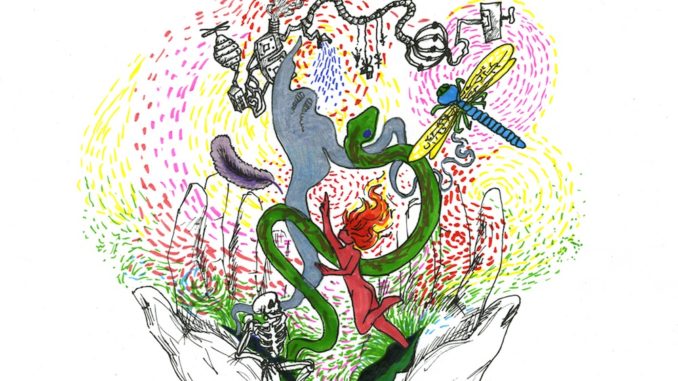
By Althea Billings
I am not an “artist.” I think many of us hesitate to claim the term. I am not a studio art major or someone who sells their art. But I do art anyway.
So many of us have been shamed away from creative pursuits, perhaps under the idea that unless it is “good” it is not productive enough to merit our time. Unless other people can understand it, it is not worth our time or effort; we are just not creative enough. The application of norms to art, especially to children, has lasting effects.
“Art scars,” a term coined by Brené Brown, a professor at the University of Houston, refers to those times in life where someone shamed you away from your creative ambition. Maybe it was your elementary school art teacher, maybe it was your aunt not knowing that what you were drawing was an elephant and not a shrub, maybe it was a teenager at the park who told you you were singing off-key. They are called scars for a reason; after the initial trauma, our bodies covered the spot with extra protection and we do not want to be prodded there. The majority of us have, at some point in life, been told we were not good enough and maybe we came to believe we just were not that creative.
I had an art teacher in elementary school who, on principle, would not tell anyone that she liked their art. She was the mother of one of the kids in class, so one supposes she had liked his at the very least. She worried it would create unfair competition, or that it would hurt another kids feelings if she said your painting of a cow was good. That philosophy ultimately does more harm than good. Why does the praise of one thing mean the other is invalid or without merit?
I am no great artistic talent, but perhaps what separates me from others is that I do not let that bother me so much. I like to embroider, paint, bead and embellish my clothes. When I show people they say, “Wow, that’s so cool, I wish I could do that.” My work is nothing compared to some of my truly talented friends. I have a friend who embroidered a book jacket for a Jack Kerouac novel, and here I am making a beetle patch for my friend’s jacket. Many people are afraid to create bad art because they think they are not creative or skilled enough. Art does not have to be for the consumption of others, nor does it gain merit from others’ approval. Why even introduce a value judgement on something that is not for anyone else?
In asking why we deny ourselves artistic ventures, it is important to inquire whether we do not pursue them because we are not interested or because we are afraid they will not be good enough.
As Brown says, “unused creativity is not benign … it metastasizes into resentment, grief, heartbreak. People sit on that creativity or they deny it and it festers.”
Everyone should be encouraged to make art that does not mean anything. If you just wanted to try it or you thought it was cool let the end product leave the worth of the process unchanged. If you are looking for a place to start, try Scrap in Nob Hill downtown. It is a secondhand art supply store and you can get a bunch of supplies, both usual and unusual for an obscenely low price. It is a great place to begin searching for what interests you because the cost of consumption and of trial and error is low.
Recognize your art scars for what they are: figments of the past. Someone in your life put an idea in your head when you were little and they were wrong. Your creativity is wherever you left it, and it deserves to be brought home.
Subscribe to the Mossy Log Newsletter
Stay up to date with the goings-on at Lewis & Clark! Get the top stories or your favorite section delivered to your inbox whenever we release a new issue.

I grew up in WV and lived above the Ohio River with a road, a railroad track and cornfields between my house and the rivers edge. As a second grader in art class I was told my rendering of a sunset on the Ohio was too orange. I didn’t argue but I never forgot the embarrassment of the moment and avoided art all through my school years.